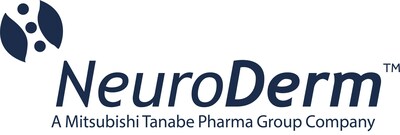| |
- ND0612, a continuous 24 hours/day subcutaneous (SC) infusion of liquid levodopa/carbidopa (LD/CD), showed superior efficacy compared to oral LD/CD for the primary endpoint ("ON" time without troublesome dyskinesia, also called "Good ON" time) and the key secondary endpoint ("OFF" time).1
- ND0612 also demonstrated superior efficacy on several pre-defined secondary endpoints, including the MDS-Unified Parkinson's Disease Rating Scale Part II score (MDS-UPDRS motor experiences of daily living sub-score), Patient Global Impression of Change (PGIC) and Clinical Global Impression of Improvement (CGI-I).1
- ND0612 systemic adverse events were typical to the well-established safety profile of oral LD/CD. 1,3 Infusion site reactions associated with ND0612 treatment were mostly non-serious and mild to moderate in severity.1
- ND0612 was well tolerated, with only 6.3% of patients randomized to ND0612 discontinuing the trial, including 5.5% who discontinued due to adverse events.1
REHOVOT, Israel, Jan. 9, 2023 /PRNewswire/ -- NeuroDerm Ltd., a wholly owned subsidiary of Mitsubishi Tanabe Pharma Corporation (MTPC), today announced highly positive results from the Phase III multi-center, randomized, double-blind double-dummy (DBDD) BouNDless trial. The trial, which evaluated ND0612 – a continuous, 24 hours/day subcutaneous (SC) infusion of liquid levodopa/carbidopa (LD/CD) for Parkinson's Disease (PD) patients with motor fluctuations – met its primary endpoint of "Good ON" time.1
Following two sequential open-label periods to optimize oral LD/CD and ND0612, patients were randomized to either ND0612 or oral LD/CD for a 12-week DBDD period.4 Treatment with ND0612 demonstrated superiority over oral LD/CD, with a statistically significant difference (p<0.0001) of 1.72 hours in "Good ON" time.
The trial also demonstrated positive and clinically meaningful results for the key secondary endpoint of "OFF" time (p<0.0001) and other secondary endpoints including the MDS-Unified Parkinson's Disease Rating Scale Part II score (MDS-UPDRS motor experiences of daily living sub-score) (p<0.0001); the Patient Global Impression of Change (PGIC) (p<0.0001); and the Clinical Global Impression of Improvement (CGI-I) (p<0.0001).1
"With these positive results for the primary endpoint and four secondary endpoints, ND0612 has confirmed its potential as an effective treatment strategy for Parkinson's disease patients with motor fluctuations, despite optimization of oral therapies," said Professor Alberto Espay, MD, FAAN, Primary U.S. Investigator of BouNDless and Director of the James J. and Joan A. Gardner Family Center for Parkinson's Disease and Movement Disorders at the University of Cincinnati. "Continuous subcutaneous LD/CD treatment shows promise to change the treatment paradigm and transform the lives of patients with Parkinson's disease."
The systemic safety profile of ND0612 was consistent with the well-established safety profile of oral standard of care LD/CD.1 Out of the most common (≥5%) adverse events (AEs) reported in any treatment group during the DBDD period, some infusion site reactions (hematoma, infection and erythema) were more frequently reported in the ND0612 group compared to oral LD/CD, while "on and off phenomenon" and falls were less frequently reported in the ND0612 group compared to oral LD/CD.
Only 6.3% of patients randomized to ND0612 discontinued the trial during the DBDD period due to any reason – including 5.5% due to AEs, compared to 6.1% and 3.1%, respectively, of patients randomized to oral LD/CD.1
"These results are meaningful to both patients and healthcare providers, as there will be a novel, minimally invasive, continuous subcutaneous LD/CD treatment option demonstrating encouraging efficacy and tolerability, thereby helping patients stay on treatment with better motor function – an important milestone leading to better health outcomes and less clinical burden for people with PD experiencing motor fluctuations," said Professor Olivier Rascol, Primary Investigator of BouNDless in Europe and Israel, Professor of Clinical Pharmacology at Toulouse University Hospital and chair of the French NS-Park clinical research network on Parkinson's disease.
"We are extremely encouraged by the positive outcome of the Phase III BouNDless trial. People with Parkinson's disease experiencing motor fluctuations have limited options to manage their condition. These remarkable results confirm the potential of ND0612 as an effective and well-tolerated treatment option to better control motor fluctuations – addressing a significant, unmet need," said Tami Yardeni, EVP, Clinical Development, NeuroDerm. "We are thankful to everyone who participated in this important trial and remain committed to improving the quality of life for people with Parkinson's disease and their families."
Analyses of results from the ongoing BouNDless trial complement the long-term safety data assessing ND0612 with up to 7 years of follow-up.5 Additional data will be presented at upcoming medical meetings; submissions to regulatory authorities are anticipated in the United States this year and later in the European Union.
About Parkinson's Disease
Parkinson's disease affects more than 10 million people worldwide.6 It is caused by decreasing dopamine signaling in the brain as dopaminergic brain cells die off.7,8 Levodopa is the most important replacement therapy for Parkinson's disease, administered together with a levodopa degradation inhibitor (usually carbidopa).2,8 Oral levodopa intake leads to fluctuating plasma concentrations, with high peaks and low troughs that contribute to the progressive emergence of disabling clinical oscillations over the day in the motor function of many people with Parkinson's disease.9 With disease progression, adjustments in oral levodopa therapy become less and less effective in managing such motor complications, leaving patients with limited treatment options that are highly invasive.9
About ND0612
ND0612 is a drug-device combination therapy – a 24 hours/day, continuous subcutaneous infusion of liquid levodopa/carbidopa for people with Parkinson's disease experiencing motor fluctuations. There is an ongoing unmet need for treatment innovation for people with Parkinson's disease, as oral levodopa/carbidopa treatments yield a variable and unfavorable pharmacokinetic profile to maintain a stable clinical response during the day.10 ND0612 is designed to improve the drugs' pharmacokinetic profiles by avoiding gastric involvement and maintaining stable and continuous therapeutic levodopa plasma concentrations.
About NeuroDerm, Ltd.
NeuroDerm is a wholly owned subsidiary of Mitsubishi Tanabe Pharma Corporation (MTPC), based in Israel, inspired to reduce disease burden and improve the quality of life of patients and their families through innovative drug-device combination therapies and technologies. NeuroDerm Ltd. is a pharmaceutical and medical technology integrated company developing central nervous system (CNS) product candidates that are designed to address major deficiencies of current treatments. For additional information, please visit NeuroDerm's website at www.neuroderm.com or follow us on LinkedIn.
About Mitsubishi Tanabe Pharma Corporation and Mitsubishi Chemical Group
Mitsubishi Tanabe Pharma Corporation (MTPC), the pharma arm of Mitsubishi Chemical Group (MCG), is one of the oldest pharmaceutical companies in the world, founded in 1678, and focusing on ethical pharmaceuticals. MTPC is headquartered in Doshomachi, Osaka, the birthplace of Japan's pharmaceutical industry. MCG has positioned health care as its strategic focus in its management policy, "Forging the future." With the MISSION of "creating hope for all facing illness," MTPC is prioritizing work on "precision medicine" to provide drugs with high treatment satisfaction by identifying patient populations with high potential for efficacy and safety, focusing on the disease areas of central nervous system and immuno-inflammation. For more information, go to https://www.mt-pharma.co.jp/e/.
About Mitsubishi Tanabe Pharma America, Inc.
Based in Jersey City, N.J., Mitsubishi Tanabe Pharma America, Inc. (MTPA) is a wholly owned subsidiary of Mitsubishi Tanabe Pharma Corporation's (MTPC) 100% owned U.S. holding company, Mitsubishi Tanabe Pharma Holdings America, Inc. It was established by MTPC to commercialize approved pharmaceutical products in North America. For more information, please visit www.mt-pharma-america.com or follow us on Twitter, Facebook and LinkedIn.
References
1. Data on File.
2. S Fahn. Levodopa in the treatment of Parkinson's disease. J Neural Transm Suppl.2006;(71):1-15. doi: 10.1007/978-3-211-33328-0_1.
3. Dijk JM et al, The Choice Between Advanced Therapies for Parkinson's Disease Patients: Why, What, and When? J Parkinsons Dis 2020;10(s1):S65-S73.
4. Efficacy, Safety and Tolerability Study of ND0612 vs. Oral IR-LD/CD in Subjects with PD Experiencing Motor Fluctuations (BouNDless). Available at: https://clinicaltrials.gov/ct2/show/NCT04006210. Accessed November 7, 2022.
5. S Isaacson, C Warren Olanow, T Simuni, et al. Long-term safety of continuous levodopa/carbidopa infusion with ND0612: Results from the ongoing BeyoND study. Poster presented at: American Academy of Neurology Annual Meeting; 2022 Apr 2-7; Seattle, WA.
6. Who Has Parkinson's? Parkinson's Foundation. Available at: https://www.parkinson.org/Understanding-Parkinsons/Statistics#:~:text=More%20than%2010%20million%20people. Accessed November 10, 2022.
7. Parkinson's 101. The Michael J. Fox Foundation. Available at: https://www.michaeljfox.org/parkinsons-101#q2. Accessed March 15, 2022.
8. Poewe W, Seppi K, Tanner CM, Halliday GM, Brundin P, Volkmann J, Schrag AE, Lang AE.
Parkinson disease. Nat Rev Dis Primers. 2017 Mar 23;3:17013.
9. Fox SH, Katzenschlager R, Lim SY, Barton B, de Bie RMA, Seppi K, Coelho M, Sampaio C; Movement Disorder Society Evidence-Based Medicine Committee.International Parkinson and movement disorder society evidence-based medicine review: Update on treatments for the motor symptoms of Parkinson's disease. Mov Disord. 2018 Aug;33(8):1248-1266.
10. C Warren Olanow, J Obeso, F Stocchi. Drug Insight: continuous dopaminergic stimulation in the treatment of Parkinson's disease. Nat Rev Neurol 2, 382–392 (2006).
Media Contact
Name: Enola Chen
Email: Enola.Chen@redhavas.com
Phone: +1-914-338-3129
 View original content to download multimedia:https://www.prnewswire.com/news-releases/neuroderm-announces-highly-positive-results-from-the-pivotal-phase-iii-boundless-trial-evaluating-nd0612-in-parkinsons-disease-patients-with-motor-fluctuations-301715848.html View original content to download multimedia:https://www.prnewswire.com/news-releases/neuroderm-announces-highly-positive-results-from-the-pivotal-phase-iii-boundless-trial-evaluating-nd0612-in-parkinsons-disease-patients-with-motor-fluctuations-301715848.html
SOURCE NeuroDerm Ltd.
|
|





